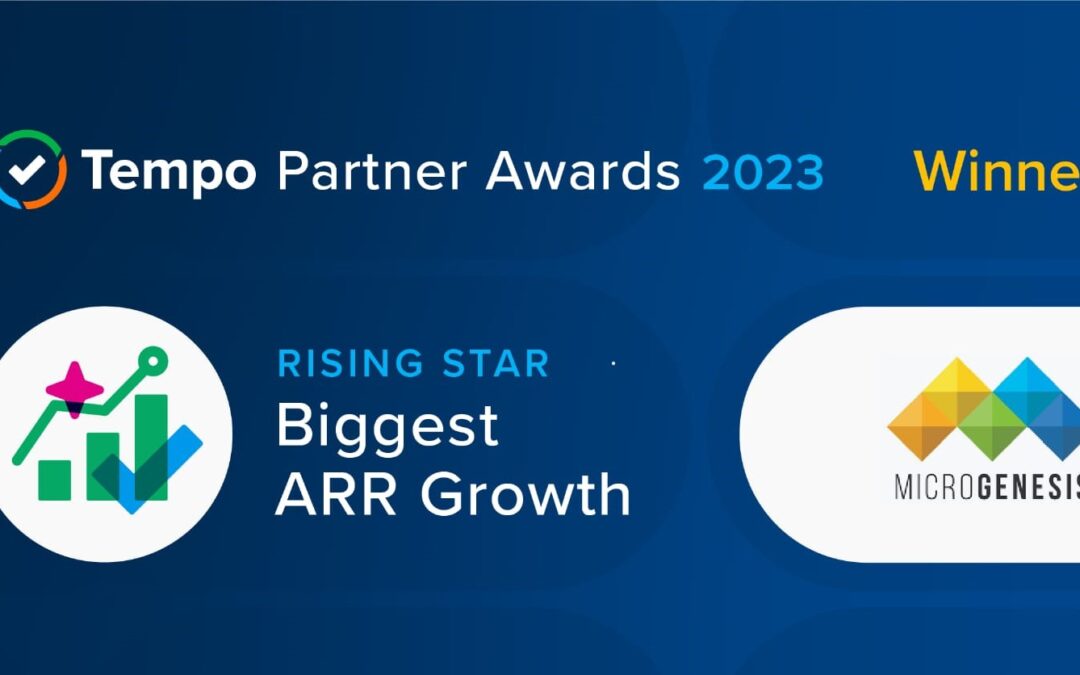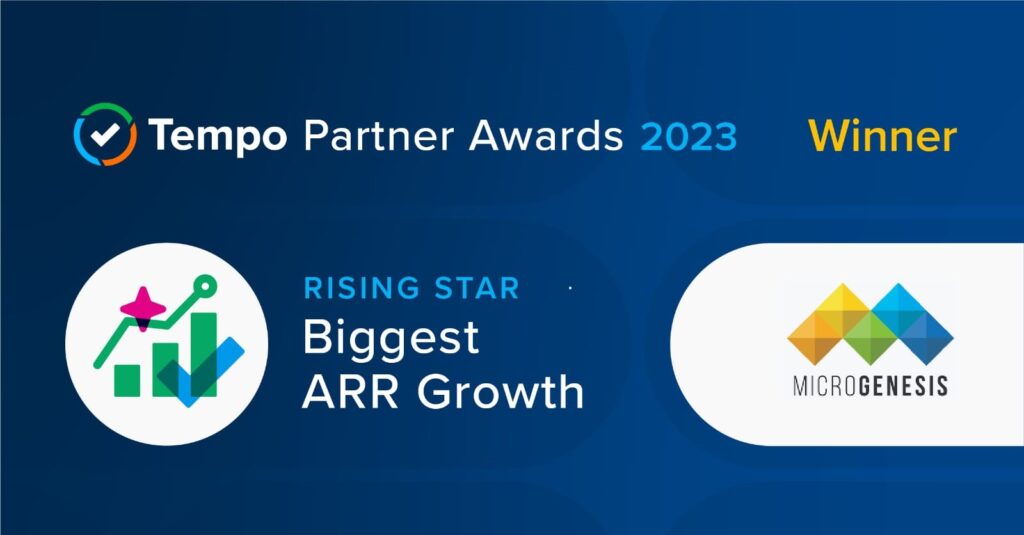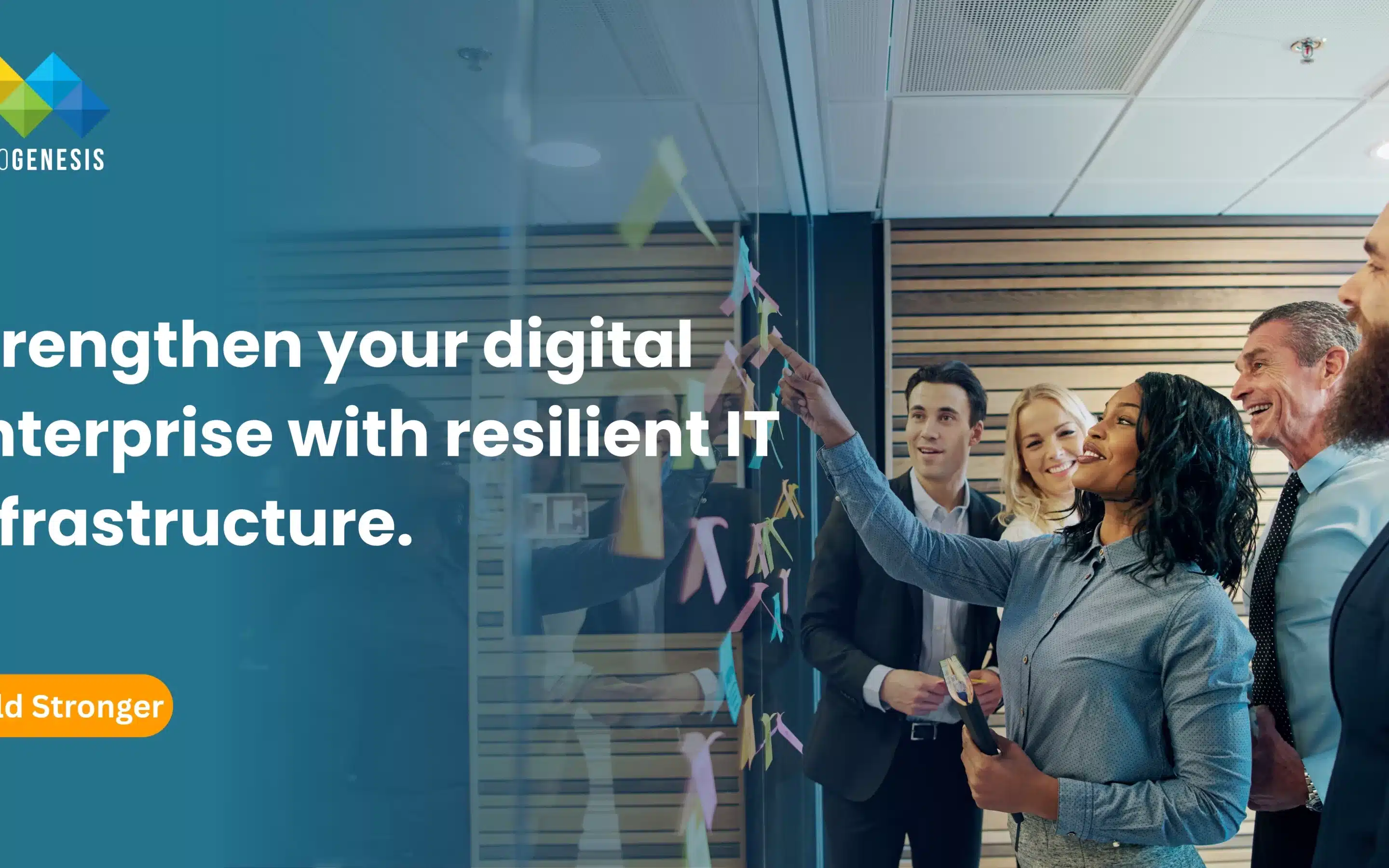
by Hemanth Kumar | Nov 17, 2025 | Uncategorized
In the digital age, every organization depends on technology to operate, innovate, and compete. From cloud platforms and data centers to applications and connectivity, IT infrastructure forms the backbone of modern enterprises. However, as digital ecosystems become more complex and distributed, the ability to maintain resilience — that is, to withstand disruptions and recover quickly — has never been more critical.
Resilient IT infrastructure ensures business continuity in the face of cyberattacks, system failures, or global disruptions. It empowers enterprises to deliver consistent performance, maintain compliance, and scale operations seamlessly — even under unpredictable conditions.
This article explores the principles, components, and best practices of building a resilient IT infrastructure, including strategies for modernization, automation, and hybrid cloud integration.
1. Understanding IT Infrastructure Resilience
1.1 Definition
IT infrastructure resilience refers to the ability of an organization’s technology ecosystem to continue operating effectively during and after disruptions. It encompasses availability, recoverability, adaptability, and performance continuity.
A resilient infrastructure isn’t just one that avoids failure — it’s one that anticipates and absorbs impact while maintaining business-critical functions.
1.2 Why Resilience Matters in a Digital Enterprise
Today’s enterprises operate in 24/7 global markets where downtime translates directly to financial loss and reputational damage. Customers expect uninterrupted service and instant access to digital experiences.
A resilient infrastructure minimizes service interruptions, protects data integrity, and maintains regulatory compliance. In essence, resilience isn’t just a technical goal — it’s a strategic business imperative.
2. The Core Pillars of IT Infrastructure Resilience
2.1 Availability
Availability ensures systems are accessible whenever users need them. This requires redundant components, high availability clusters, and automated failover mechanisms.
For instance, cloud environments distribute workloads across multiple regions or availability zones, preventing localized outages from impacting users.
2.2 Reliability
Reliability focuses on consistent performance and operational stability. Systems must perform predictably under normal and peak conditions alike.
Monitoring tools, service-level agreements (SLAs), and preventive maintenance contribute to sustaining reliability across applications and services.
2.3 Scalability
Scalability allows infrastructure to expand or contract resources dynamically based on demand.
For example, during seasonal traffic spikes, auto-scaling cloud environments can provision additional compute resources automatically — ensuring uninterrupted performance without overprovisioning costs.
2.4 Security
Security is an inseparable part of resilience. A breach or ransomware attack can disrupt operations as severely as a hardware failure.
Resilient infrastructures employ defense-in-depth strategies, including identity management, encryption, zero-trust access, and continuous threat monitoring.
2.5 Recoverability
Recoverability ensures that systems can restore functionality quickly after a failure or attack.
Disaster recovery (DR) strategies, backup automation, and replication technologies help minimize data loss and restore critical systems within defined recovery time objectives (RTOs).
3. Modern IT Infrastructure Landscape
3.1 Hybrid and Multi-Cloud Environments
Most modern enterprises use a mix of on-premises, private cloud, and public cloud resources. This hybrid approach provides flexibility but increases complexity.
Resilience in such environments requires unified visibility, workload portability, and consistent security policies across platforms.
3.2 Edge Computing
As IoT devices proliferate, data processing is moving closer to its source — at the edge. Edge computing reduces latency and enhances local reliability but introduces new management and security challenges.
Resilient edge architectures employ local failover mechanisms and synchronize seamlessly with central cloud systems.
3.3 Software-Defined Infrastructure
Software-defined infrastructure (SDI) abstracts hardware management through software — including software-defined networking (SDN), storage (SDS), and data centers (SDDC).
This enables automation, rapid provisioning, and greater control, reducing the risk of manual misconfigurations that often cause downtime.
4. Designing for Resilience: Key Architectural Principles
4.1 Redundancy and Failover
Redundancy ensures there is no single point of failure. Systems should have backup components, data paths, and network routes to maintain continuity.
Failover systems automatically switch to standby resources when the primary system fails, ensuring seamless user experiences.
4.2 Distributed Systems
A distributed architecture spreads workloads across multiple servers or regions, reducing dependency on any single location.
For example, a global e-commerce platform might replicate its data and services across multiple data centers to maintain regional availability and performance.
4.3 Modularity and Microservices
Microservices architecture enhances resilience by isolating functionalities into smaller, independent services.
If one component fails, it doesn’t bring down the entire system — making updates, scaling, and recovery far more manageable.
4.4 Automation and Orchestration
Automated provisioning, monitoring, and remediation minimize human error and response times.
Tools like Terraform, Ansible, and Kubernetes orchestrate complex systems, ensuring that resources are configured correctly and can recover automatically from disruptions.
4.5 Observability
Observability goes beyond traditional monitoring by providing deep insight into system behavior through metrics, traces, and logs.
Platforms like Prometheus, Grafana, or Datadog enable teams to visualize dependencies, detect anomalies early, and optimize system performance proactively.
5. Cybersecurity as a Pillar of Resilience
5.1 Zero-Trust Architecture
In modern IT, internal networks can no longer be assumed secure. Zero-trust models enforce continuous authentication and least-privilege access to mitigate insider and external threats — strengthened by advanced ITSM software for monitoring, control, and compliance.
This approach ensures that even if one segment is compromised, attackers cannot move laterally across systems.
5.2 Endpoint Protection and Threat Intelligence
Endpoints — laptops, mobile devices, IoT nodes — are common targets for attackers.
Integrating Endpoint Detection and Response (EDR) and Threat Intelligence Platforms (TIPs) enables organizations to detect, analyze, and respond to threats before they escalate.
5.3 Secure Backup and Encryption
Ransomware can cripple operations by encrypting data. To combat this, organizations should implement immutable backups (backups that cannot be altered or deleted) and encrypt data both in transit and at rest.
Regular restoration testing ensures backups remain viable when needed most.
6. Building a Culture of Resilience
6.1 Cross-Functional Collaboration
True resilience extends beyond technology — it’s a cultural mindset. IT, security, operations, and business teams must collaborate to identify risks and establish clear communication protocols.
Joint ownership of incident response processes ensures accountability and faster decision-making during crises.
6.2 Continuous Learning and Simulation
Regular disaster recovery drills, tabletop exercises, and chaos engineering experiments (like Netflix’s “Chaos Monkey”) help teams prepare for real-world failures.
By intentionally testing systems under stress, organizations identify weak points and strengthen overall readiness.
6.3 Governance and Compliance Alignment
Regulated industries — such as finance, healthcare, and energy — must align resilience strategies with compliance frameworks like ISO 27001, NIST, or SOC 2.
Integrating governance into infrastructure design reduces audit complexity and ensures sustained compliance over time.
7. Leveraging Cloud for Resilience
7.1 Elastic Infrastructure
Cloud platforms like AWS, Azure, and Google Cloud offer auto-scaling and load-balancing capabilities that adjust to changing workloads automatically.
This elasticity prevents performance degradation during traffic surges and eliminates the need for manual scaling.
7.2 Multi-Region and Multi-Zone Deployment
Hosting applications across multiple regions or zones enhances resilience.
For example, deploying workloads across multiple AWS Availability Zones ensures that even if one region experiences an outage, services remain accessible elsewhere.
7.3 Cloud-Native Backup and Disaster Recovery
Cloud-based disaster recovery solutions replicate data and configurations across regions, enabling faster restoration.
Services like AWS Backup or Azure Site Recovery automate the replication process, significantly reducing Recovery Time Objectives (RTOs).
8. Measuring and Monitoring Resilience
8.1 Key Performance Indicators (KPIs)
To assess infrastructure resilience, organizations should track:
- System Uptime (%) – overall availability rate.
- Mean Time to Recovery (MTTR) – how quickly systems recover from failures.
- Recovery Point Objective (RPO) – acceptable data loss window.
- Incident Frequency – how often critical disruptions occur.
- User Impact Metrics – performance degradation perceived by end users.
These metrics create transparency and guide continuous improvement.
8.2 Resilience Audits and Continuous Improvement
Regular audits validate whether infrastructure, processes, and people align with resilience goals.
Continuous improvement frameworks — like ITIL and ISO 22301 — provide structured methods for refining disaster recovery, security, and performance management.
Dig Deeper: How IT Service Management Reduces Downtime and Saves Costs for Growing Businesses
9. Future Trends in IT Infrastructure Resilience
9.1 AI and AIOps for Self-Healing Systems
Artificial intelligence is driving the next wave of infrastructure resilience. AIOps platforms enable predictive monitoring, automated root-cause analysis, and self-healing systems.
As machine learning matures, infrastructures will identify and remediate failures autonomously — minimizing downtime without human intervention.
9.2 Sustainable and Green Infrastructure
Sustainability is now a strategic priority. Energy-efficient data centers, server optimization, and renewable-powered cloud regions reduce both carbon footprint and operational costs.
Green infrastructure aligns IT operations with corporate ESG (Environmental, Social, and Governance) goals.
9.3 Quantum-Ready and Decentralized Architectures
As quantum computing and decentralized systems evolve, future infrastructure will need to adapt to new computational paradigms.
Enterprises are already exploring quantum-safe encryption and distributed data architectures to ensure resilience in next-generation environments.
Conclusion
In the digital economy, resilience is no longer optional — it’s a competitive advantage. Building resilient IT infrastructure allows enterprises to maintain trust, continuity, and performance even in the face of disruption.
By combining architectural redundancy, cybersecurity, automation, and a culture of preparedness, organizations can transform their infrastructure from fragile to future-ready.
With MicroGenesis, a trusted digital transformation consultant offering comprehensive ITSM solutions, enterprises can design intelligent systems that not only recover from challenges but also learn, adapt, and evolve for long-term success.
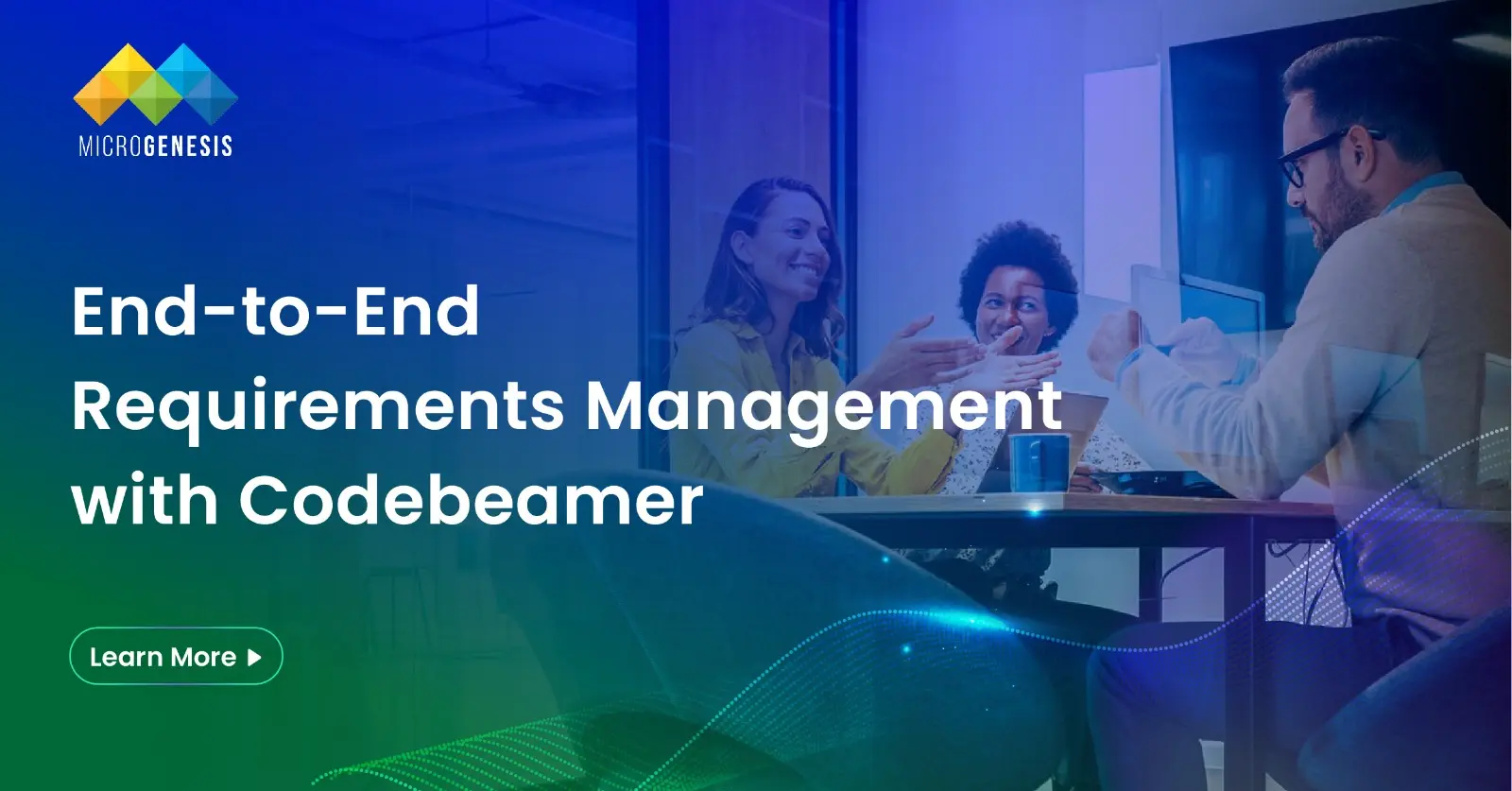
by Chethan Ananda | May 21, 2025 | Uncategorized
IBM Engineering Requirements Management DOORS – Web Access (DWA) is a web-based client that provides users with the ability to manage, edit, and collaborate on requirements stored in the DOORS database. This comprehensive guide delves into the functionalities of DWA, highlighting its features, benefits, and best practices for effective requirements management.
What is IBM DOORS Web Access (DWA)?
IBM DOORS Web Access (DWA) offers browser-based access to the DOORS database, enabling users to create, analyze, edit, and discuss requirements from various locations, including offices, homes, or while traveling. This flexibility ensures that stakeholders remain connected and productive, regardless of their location.
Key Features of DWA
1. Module Viewing and Customization
DWA, part of the IBM ELM software suite, allows users to control how modules are displayed using the Layout menu. This feature enables customization of views to focus on specific attributes, filters, or sorting preferences, ensuring that users can efficiently access the information most relevant to their tasks.
2. Editing and Managing Requirements
Users can perform various actions within modules, including:
- Creating new requirement objects.
- Copying, moving, or deleting existing objects.
These capabilities ensure that the requirements database remains current and accurately reflects project needs.
3. Linking Related Information
Establishing connections between related requirements is crucial for traceability and impact analysis. In DWA, users can:
- Link requirements within the same database to illustrate dependencies or hierarchies.
- Create external links using URLs to reference information outside the DOORS database.
- Establish collaboration links to artifacts in other applications, especially when integrated with IBM’s Engineering Lifecycle Management (ELM) suite. IBM
4. Collaborative Discussions
Effective collaboration is at the heart of successful requirements management. DWA facilitates this through its Discussions feature, allowing stakeholders to:Wikipedia+2IBM+2Jazz.net+2
- Initiate discussions at both the module and object levels to address specific concerns or suggestions.
- View and contribute to ongoing discussions, ensuring that all voices are heard and considered.
- Sort discussions by author, status, or latest comment, making it easier to track and manage feedback.
Benefits of Using IBM DOORS Web Access (DWA)
IBM DOORS Web Access (DWA) significantly enhances the way teams manage, edit, and collaborate on requirements across complex projects. Here’s how DWA benefits organizations striving for better visibility, traceability, and stakeholder engagement.
1. Enhanced Accessibility
Key Benefits:
- Access requirements from any web browser—no desktop installation required
- Ideal for remote teams and distributed stakeholders
- Reduces IT overhead for client-side setup
DWA allows users to interact with DOORS requirements using just a web browser, removing the dependency on local software installation. Whether team members are working from an office, at home, or on the go, they can securely access project data in real time. This increases project velocity and ensures that all stakeholders, regardless of location, are aligned on the most current requirements and decisions.
2. Improved Collaboration
Key Benefits:
- In-context discussion threads tied to specific requirements or modules
- Promotes real-time feedback and collective decision-making
- Enhances transparency and accountability in communication
With the Discussions feature, DWA enables collaborative conversations directly within the requirements environment. Stakeholders can comment on specific objects or modules, facilitating real-time feedback loops without the need for external communication tools. This improves alignment, reduces misunderstandings, and ensures that all feedback is contextually captured—enhancing both the accuracy and quality of the requirements.
3. Seamless Integration
Key Benefits:
- OSLC-based integration with IBM ELM and third-party tools
- Enables end-to-end traceability across the development lifecycle
- Supports compliance and audit requirements in regulated industries
DWA supports Open Services for Lifecycle Collaboration (OSLC), allowing it to integrate easily with other IBM Engineering Lifecycle Management tools like Rational Team Concert and Engineering Test Management. These integrations allow requirements to be linked with work items, test cases, change requests, and system models—creating a continuous digital thread. This is essential for teams working in regulated environments, where demonstrating traceability from requirement to delivery is a compliance necessity. Partnering with an experienced IBM ELM Consultant ensures these integrations are effectively implemented, maximizing traceability and regulatory compliance.
4. Efficient Requirements Management
Key Benefits:
- Centralized editing, filtering, and linking of requirement artifacts
- User-friendly interface with layout customization and filtering
- Increases team productivity and reduces rework
DWA simplifies the complexities of requirements engineering by offering a centralized platform for managing and composing requirements. Teams can quickly add or modify objects, create structured hierarchies, and apply relationships between artifacts—all within an intuitive, browser-based UI. Filtering and layout customization further enhance navigation and focus, enabling users to manage large volumes of data more efficiently. As a result, DWA reduces administrative burden, minimizes errors, and ensures consistency throughout the project lifecycle.
Read More: Addressing Complexity in Electric Vehicle (EV) System Design and Development Using IBM ELM
Best Practices for Using DWA
1. Regularly Update Requirements
Ensure that all requirements are up-to-date by regularly reviewing and editing them as needed. This practice helps maintain the accuracy and relevance of the requirements database.
2. Utilize Discussions for Feedback
Encourage stakeholders to use the Discussions feature to provide feedback and discuss requirements. This collaborative approach promotes transparency and collective decision-making.
3. Establish Clear Linking Strategies
Develop a clear strategy for linking related requirements and artifacts. Consistent linking practices enhance traceability and facilitate impact analysis.www.slideshare.net+6IBM+6MicroGenesis TechSoft+6
4. Leverage Integration Capabilities
Take advantage of DWA’s integration capabilities to connect with other tools and systems. This integration supports a cohesive and streamlined requirements management process.
Conclusion
IBM Engineering Requirements Management DOORS – Web Access (DWA) is a powerful tool that enhances the management, editing, and collaboration of requirements within the DOORS database. As part of IBM ELM Solutions, it offers web-based accessibility, robust features, and seamless integration capabilities. MicroGenesis, a leading digital transformation company, helps organizations implement and optimize DOORS Web Access to drive efficiency, collaboration, and precision in requirements management.
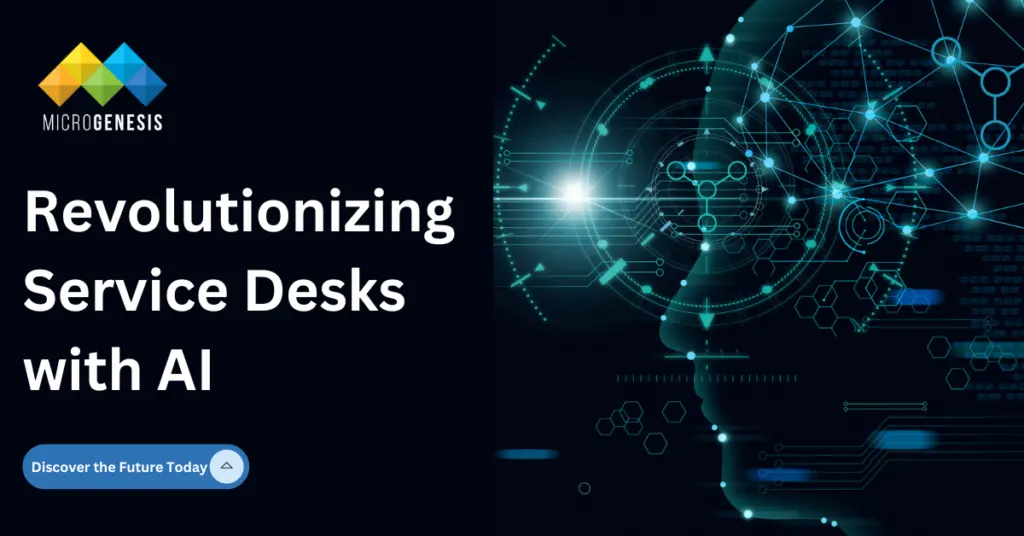
by Guruprasad Shenoy | Jun 29, 2024 | Atlassian, Uncategorized
The traditional service desk, once a simple ticketing system, is undergoing a dramatic transformation. Driven by advancements like artificial intelligence (AI), chatbots, and automation, Jira Service Management (JSM) is at the forefront of this evolution, empowering organizations to deliver exceptional service experiences in the digital age.
Unlocking Efficiency with Intelligent Automation:
Imagine a service desk that intelligently categorizes tickets, assigns them to the right agents, and even suggests solutions based on historical data. JSM’s machine learning-powered automation capabilities handle repetitive tasks like data entry and first-level troubleshooting seamlessly. This frees up agents to focus on complex issues, proactive problem-solving, and providing personalized support.
At MicroGenesis, as trusted Atlassian partners, we leverage these advanced Atlassian solutions to enhance your service desk operations. Our expertise ensures that your organization benefits from the full potential of JSM’s intelligent automation, driving efficiency and excellence in service delivery.
Conversational AI: Revolutionizing User Experience
Gone are the days of frustrating phone menus and long wait times. Virtual Agents powered by AI are becoming the preferred way for users to interact with service desks. JSM seamlessly integrates with these agents, allowing users to get instant answers, submit tickets, and track progress in a natural, conversational manner. This 24/7 accessibility not only improves user satisfaction but also reduces the burden on human agents.
AI-powered Insights: Unraveling the Conversation
Struggling to sift through lengthy comment threads within JSM issues? JSM (in Premium and Enterprise plans) offers “Issue Comment Summarization” powered by Atlassian Intelligence. This AI tool condenses the conversation, highlighting key points like meetings, progress made, and critical discussions. This feature saves agents valuable time by providing a concise overview, allowing them to focus on efficient issue resolution. However, remember that the summary is temporary and disappears when you navigate away from the specific issue.
Also read: Atlassian Tools To Streamline Your Software Delivery Process
Similar Requests Feature: Streamlining Service Delivery
Ever feel like you’ve seen a similar request before? JSM’s “Similar Requests” feature helps agents quickly identify past tickets with similar characteristics. Utilizing Natural Language Processing (NLP), it analyzes titles and descriptions to suggest relevant past requests. This feature allows agents to leverage existing solutions, saving time and improving service delivery.
At MicroGenesis, our experienced Atlassian consultants help you make the most of this powerful feature. As Atlassian Platinum Partners, we provide top-tier support and guidance, ensuring your team benefits from efficient, streamlined service delivery with JSM’s advanced capabilities.
Empowering Users with Self-Service
A modern service desk empowers users to help themselves. JSM’s robust knowledge base and self-service portal provide users with easy access to relevant articles, FAQs, and step-by-step guides. This allows them to find solutions independently, reducing the number of support tickets and improving overall efficiency.
Unified Platform for Holistic Service Management
JSM goes beyond basic ticketing. It seamlessly integrates with other Atlassian tools like Confluence, Jira Software, and Opsgenie, creating a unified platform for all your service management needs. This holistic approach breaks down silos, fosters collaboration, and streamlines workflows across different departments.
Embrace the Future of Service Desks
JSM is not just a service desk solution; it’s a platform that empowers organizations to embrace cutting-edge technologies and deliver exceptional service experiences. By implementing AI, chatbots, and automation, organizations can create agile, proactive, and user-centric service desks well-equipped to navigate the ever-evolving IT landscape.
Conclusion
The transformation of service desks through AI and automation is revolutionizing how organizations manage and deliver services. Jira Service Management (JSM) stands at the forefront of this change, offering intelligent automation, conversational AI, and AI-powered insights that enhance user experiences and streamline operations. With features like “Issue Comment Summarization” and “Similar Requests,” JSM enables agents to resolve issues efficiently and leverage past solutions effectively. Its integration with other Atlassian tools like Confluence, Jira Software, and Opsgenie ensures a holistic approach to service management, fostering collaboration and improving overall productivity.
At MicroGenesis, our digital transformation consultants specialize in harnessing the full potential of JSM to drive exceptional service delivery. We provide comprehensive solutions that integrate cutting-edge technologies, allowing organizations to create agile, proactive, and user-centric service desks. Embrace the future of service desks with MicroGenesis and unlock unparalleled efficiency and satisfaction in your service management processes.
Are you ready to revolutionize your service desk? Start your JSM journey with MicroGenesis today!




